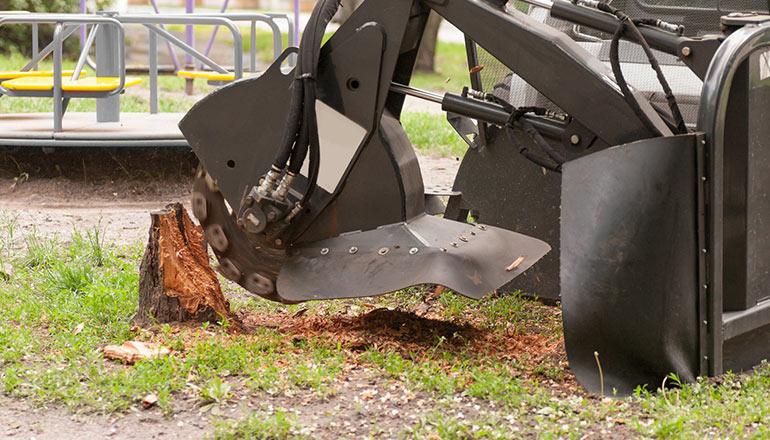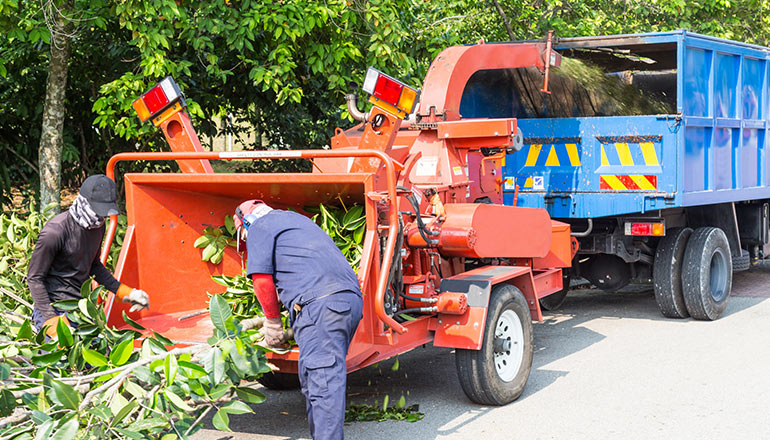
Emerald Ash Borer (EAB), an invasive insect species native to Asia, has wreaked havoc on ash tree populations across North America. The rapid spread of this destructive pest has had devastating consequences for both urban and forested landscapes. In this blog post, we will delve into the reasons why removing ash trees infected with the emerald ash borer is of utmost importance for protecting our environment, economy, and public safety.
Preservation of Other Trees and Ecosystems
One of the primary reasons for removing EAB-infected ash trees is to prevent the further spread of the pest to neighboring healthy trees. By removing infected trees promptly, we can limit the population of emerald ash borers and curtail their capacity to infest and damage nearby ash trees. Preserving the health of surrounding trees is crucial for maintaining ecosystem balance and biodiversity.
Mitigation of Economic Losses
The economic impact of the emerald ash borer infestation is staggering. Infected ash trees not only lose their ecological value but also pose financial burdens for property owners and communities. By removing infected trees, we can mitigate economic losses associated with the decline in property values and the expenses incurred for treatment, removal, and replacement of damaged trees.
Reduction of Public Safety Hazards
As emerald ash borers infiltrate ash trees, they disrupt the trees’ vascular system, leading to the gradual weakening and decline of the tree’s structural integrity. Infested trees are prone to limb drop and can become hazardous to nearby structures, pedestrians, and vehicles. Removing these weakened trees proactively ensures public safety and minimizes the risk of accidents caused by falling branches or toppling trees.
Compliance with Local Regulations
Many regions with confirmed emerald ash borer infestations have implemented regulations mandating the removal of infected ash trees. These measures are designed to prevent the spread of the invasive species and protect the environment. Adhering to these regulations not only helps control the pest but also promotes responsible tree management practices.
Facilitation of Urban Redevelopment
In urban areas, ash trees are often a significant part of the landscape. The removal of infested ash trees can clear the way for urban redevelopment projects that incorporate diverse and pest-resistant tree species. Urban planners and communities can seize the opportunity to revitalize neighborhoods with a vibrant and resilient urban forest.
Preservation of Ash Tree Species
Ash trees have long been admired for their beauty, cultural significance, and economic value. By removing infected trees and implementing proper control measures, we have a better chance of preserving the species for future generations. This approach allows researchers and arborists to focus on developing strategies for EAB management and ultimately restoring the health of ash tree populations.
Encouragement of Public Awareness
Removing EAB-infested ash trees serves as a visible reminder to the public about the seriousness of the infestation. It encourages individuals, communities, and local authorities to actively participate in monitoring and reporting potential outbreaks, raising public awareness about the importance of preserving native tree species and maintaining a balanced ecosystem.
Opportunity for Replacement and Reforestation
The removal of infected ash trees presents an opportunity to replace them with diverse tree species, creating resilient and healthier ecosystems. Reforestation efforts can contribute to long-term environmental sustainability, reduce vulnerability to future pests and diseases, and enhance the overall ecological services provided by trees.
Support for Research and Management Efforts
The removal of EAB-infested trees provides researchers and tree care professionals with valuable data to understand the extent of the infestation, track its spread, and develop effective management strategies. Such information is crucial for ongoing efforts to combat the emerald ash borer and protect our valuable tree resources.
Conclusion
In conclusion, removing ash trees infected with the emerald ash borer is not only vital for preserving the health and diversity of our ecosystems but also for protecting our communities and the economy. By taking proactive measures to manage this invasive pest, we can safeguard our ash tree population and support the overall well-being of our environment. Public awareness, adherence to regulations, and collaborative efforts among stakeholders are essential in the battle against the emerald ash borer.
If you need help removing an infected ash tree or want to thin the trees on your property in the greater Des Moines area our skilled technicians at Southern Accent Services can remove them in a safe and professional manner.
Call us today at 515-882-0777 or email us at [email protected] to set up a free same-day estimate to see what options you have and let us show you how we can help.




